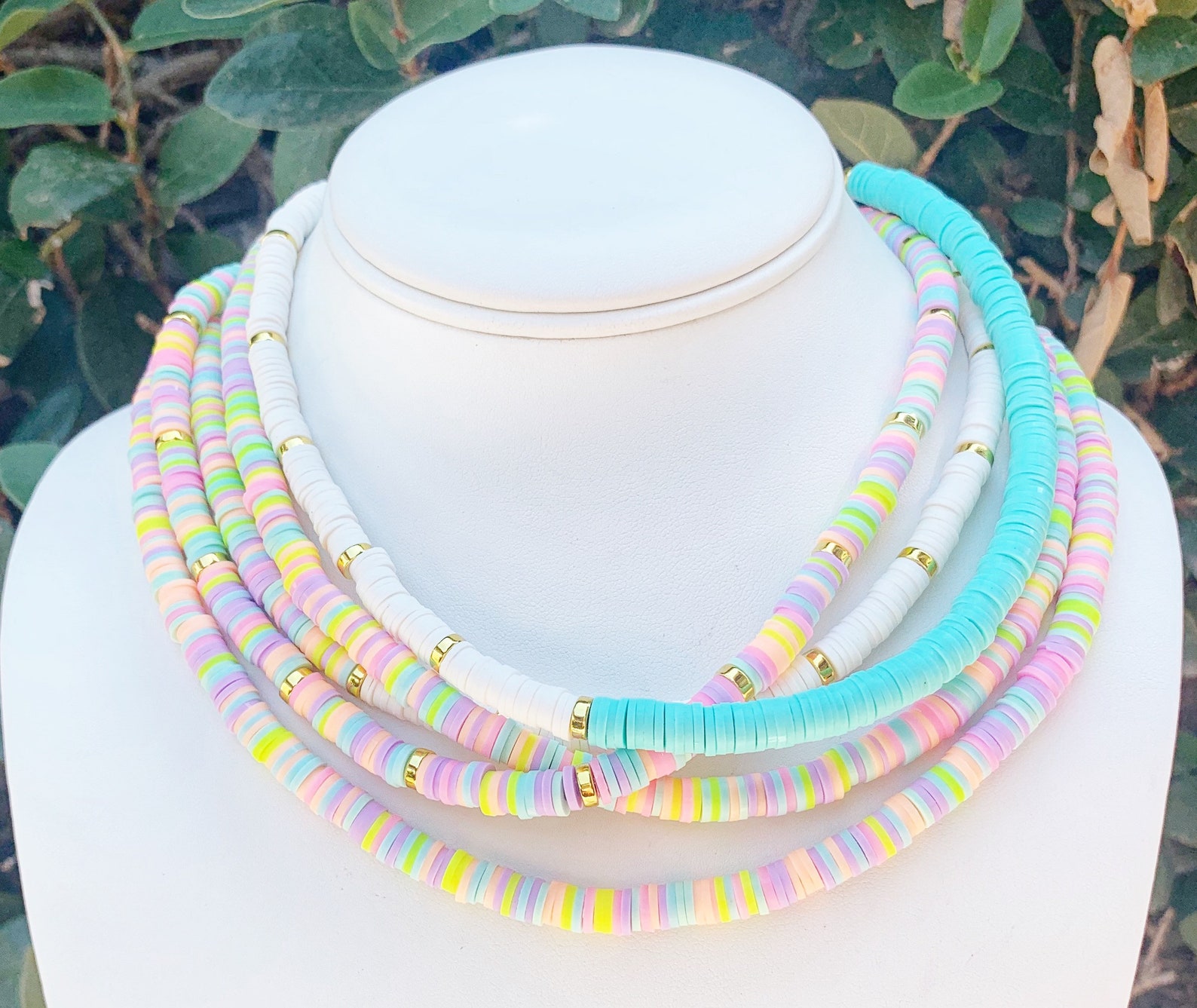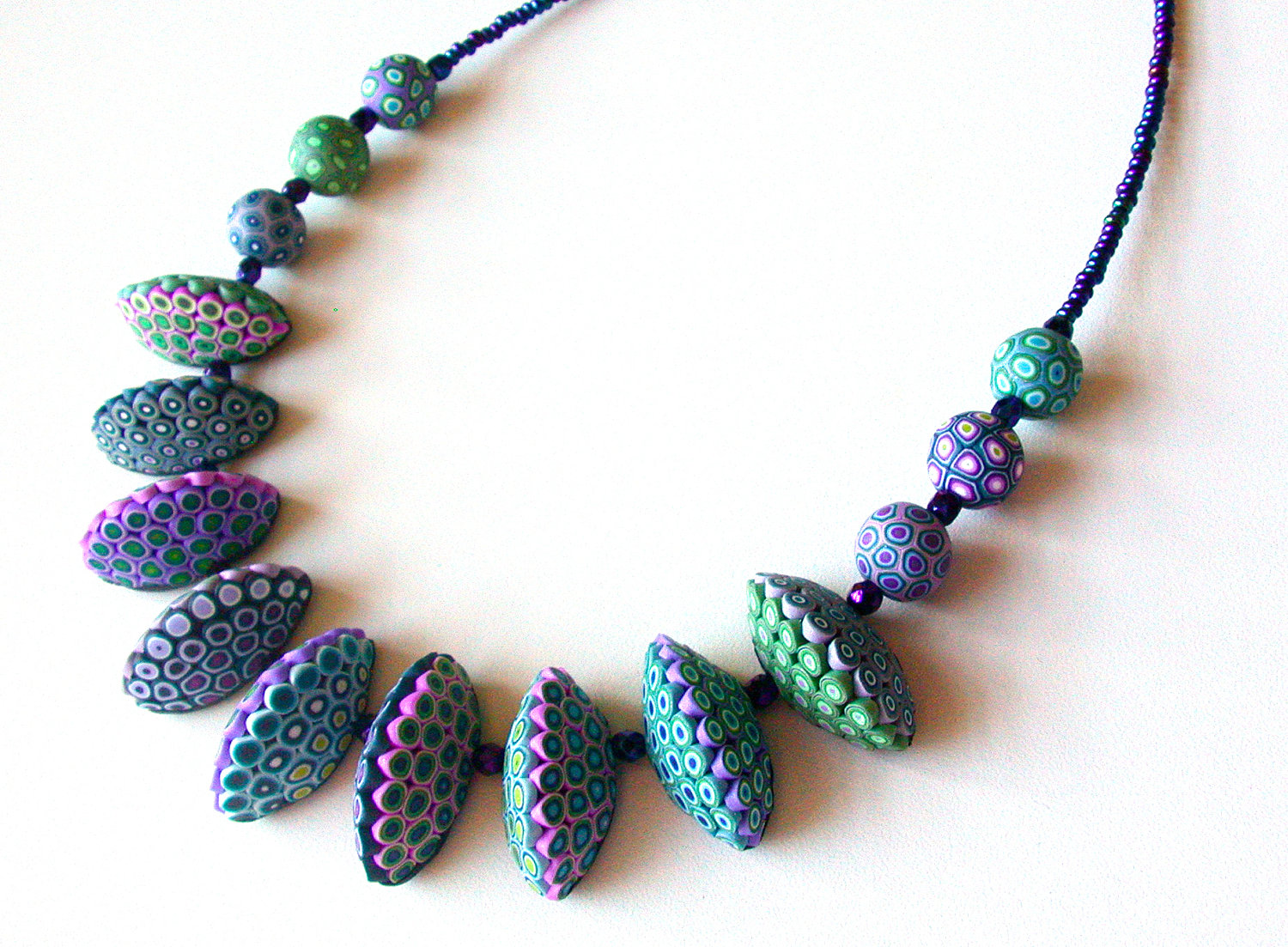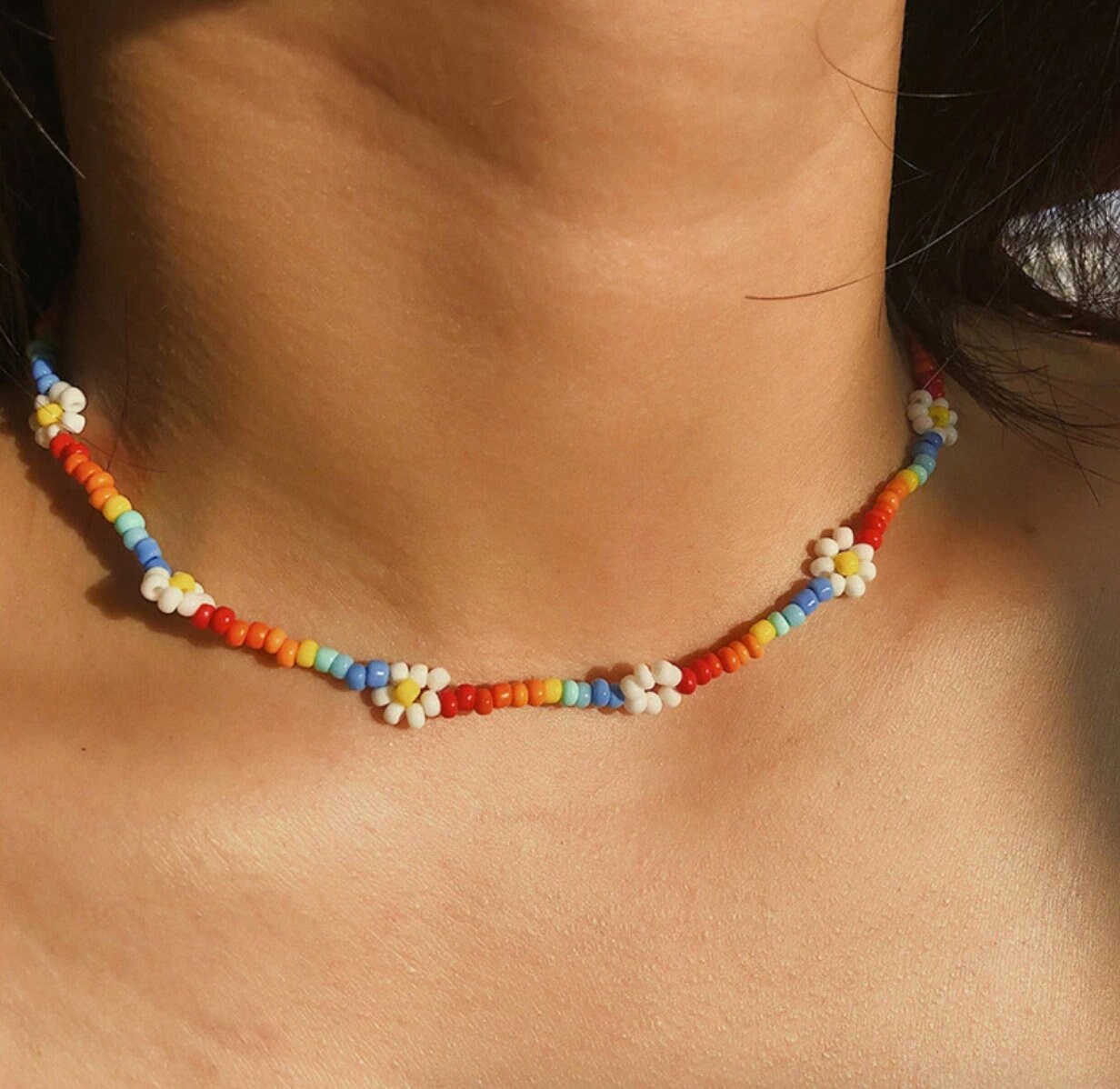Embark on a captivating journey into the realm of clay necklace ideas, where imagination meets artistry. Discover a myriad of unique designs, delve into the significance of shapes and colors, and explore the transformative power of nature. This comprehensive guide will ignite your passion for creating exquisite clay necklaces, empowering you to express your individuality and connect with cultures worldwide.
From the basics of clay preparation to advanced techniques like carving and sculpting, we’ll guide you through every step of the creative process. Let’s dive into the enchanting world of clay necklace ideas and unleash your inner artist.
Clay Necklace Design Ideas

Clay necklaces are a versatile and creative form of jewelry that can be customized to suit any style. From simple beads to intricate pendants, there are endless possibilities for creating unique and eye-catching pieces. In this article, we will explore a variety of clay necklace design ideas, drawing inspiration from different cultures and artistic styles.
Shape and Form
The shape and form of a clay necklace can greatly impact its overall appearance. Geometric shapes, such as circles, squares, and triangles, create a modern and minimalist look. Organic shapes, such as leaves, flowers, and animals, add a touch of nature and whimsy.
The size of the beads or pendants can also vary, from petite and delicate to large and statement-making.
Color and Pattern
Color and pattern play a significant role in the design of clay necklaces. Bright and bold colors, such as red, yellow, and blue, create a vibrant and energetic look. Pastel colors, such as pink, lavender, and mint, evoke a sense of calm and serenity.
Patterns, such as stripes, polka dots, and geometric designs, add visual interest and depth to the necklace.
Cultural Influences
Clay necklaces have been a part of many cultures throughout history. Native American tribes often used clay to create intricate pendants and beads adorned with symbols and motifs representing their heritage. African cultures have a rich tradition of clay jewelry, with necklaces featuring bold colors and geometric patterns.
Asian cultures, such as Japanese and Chinese, have also incorporated clay into their jewelry designs, creating delicate and elegant pieces.
Personal Expression
Clay necklaces are a great way to express your personal style and creativity. You can choose colors, shapes, and patterns that reflect your personality and interests. You can also add beads, charms, or other embellishments to create a truly unique piece.
Whether you prefer a simple and understated necklace or a bold and statement-making piece, there is a clay necklace design out there to suit your taste.
Materials and Techniques for Clay Necklaces
Crafting clay necklaces involves selecting the appropriate clay type, preparing it for use, and employing various techniques to shape, mold, and decorate the clay. This section will delve into the different types of clay suitable for necklace making, provide guidance on clay preparation and conditioning, and explore the diverse techniques used in creating unique and captivating clay necklaces.
Types of Clay for Necklaces
- Polymer Clay:Known for its versatility, pliability, and wide range of colors, polymer clay is an excellent choice for beginners and experienced crafters alike. It remains pliable until baked, allowing for intricate detailing and reshaping.
- Earthenware Clay:A porous clay fired at low temperatures, earthenware clay is suitable for necklaces with a rustic or organic aesthetic. It can be glazed to enhance its durability and appearance.
- Stoneware Clay:Fired at higher temperatures than earthenware clay, stoneware clay results in a denser, more durable material. It is often used for necklaces with intricate designs or that require additional strength.
- Porcelain Clay:The most refined type of clay, porcelain clay fires to a white, translucent finish. It is prized for its delicate appearance and is often used for creating elegant and sophisticated necklaces.
Preparing and Conditioning Clay
Before working with clay, it is essential to prepare and condition it to ensure optimal malleability and prevent cracking or crumbling. This process involves:
- Kneading:Thoroughly knead the clay to remove any air pockets and distribute moisture evenly throughout the mass.
- Rolling:Use a rolling pin to flatten the clay into a uniform thickness, making it easier to cut and shape.
- Conditioning:Add small amounts of water or clay conditioner to the clay as needed to achieve the desired consistency for shaping and molding.
Shaping, Molding, and Decorating Techniques, Clay necklace ideas
Once the clay is prepared, a variety of techniques can be employed to create unique and eye-catching necklaces:
- Cutting and Shaping:Use cookie cutters, knives, or other tools to cut and shape the clay into desired forms, such as beads, pendants, or embellishments.
- Molding:Press the clay into molds to create intricate designs or replicate specific shapes. This technique is ideal for producing identical or symmetrical pieces.
- Hand Building:Use your hands to shape and mold the clay into organic or free-form shapes, creating unique and expressive pieces.
- Decoration:Enhance the appearance of clay necklaces by adding glaze, paint, or other decorative elements. Glaze can provide a glossy or matte finish, while paint allows for intricate detailing.
Glazing and Finishing Clay Necklaces
Glazing is a crucial step in enhancing the durability and aesthetics of clay necklaces. It creates a protective layer that prevents moisture absorption, increases strength, and adds a glossy or matte finish.
Types of Glazes
- Transparent Glazes:Allow the clay’s color to show through, providing a clear, glossy finish.
- Opaque Glazes:Create a solid, non-transparent layer, hiding the clay’s color and providing a range of colors.
- Crackle Glazes:Develop fine cracks during firing, creating a unique and decorative effect.
- Raku Glazes:Fired at high temperatures in a reducing atmosphere, producing metallic or iridescent finishes.
Glazing Techniques
Glazing involves dipping or brushing the fired clay necklace into the glaze mixture. Multiple layers can be applied for added depth and color.
Firing Techniques
After glazing, the necklace is fired again at a specific temperature to fuse the glaze with the clay. Firing techniques vary depending on the glaze type and desired effect.
- Kiln Firing:Controlled heating and cooling in a kiln to achieve the desired glaze effects.
- Raku Firing:Rapid heating and cooling in an open flame, resulting in unique and unpredictable glaze finishes.
Inspiration from Nature

The natural world provides an abundance of inspiration for clay necklace designs. From the organic shapes of leaves to the vibrant colors of flowers, nature’s elements can be translated into stunning and unique pieces of jewelry.
One way to incorporate natural inspiration into clay necklaces is to use organic shapes. These shapes can be found in all aspects of nature, from the rounded curves of a pebble to the jagged edges of a leaf. By mimicking these shapes in clay, you can create necklaces that are both visually appealing and evocative of the natural world.
Textures
Textures are another important element to consider when creating clay necklaces inspired by nature. The rough texture of bark, the smooth surface of a stone, and the delicate veins of a leaf can all be recreated in clay. By using different textures, you can add depth and interest to your necklaces.
Colors
The colors of nature can also be a source of inspiration for clay necklaces. The vibrant hues of flowers, the earthy tones of soil, and the blues and greens of the ocean can all be captured in clay. By using natural colors, you can create necklaces that are both beautiful and reminiscent of the natural world.
Natural Materials
In addition to using clay, you can also incorporate natural materials into your necklaces. Stones, shells, and feathers can all be used to add a touch of nature to your jewelry. By combining different materials, you can create necklaces that are both unique and stylish.
Cultural Influences on Clay Necklaces: Clay Necklace Ideas
Clay necklaces, with their versatility and malleability, have been shaped by diverse cultural influences throughout history. They serve not only as adornments but also as symbols of identity, cultural heritage, and spiritual beliefs.
The designs, motifs, and techniques employed in clay necklaces vary widely across cultures, reflecting the unique artistic traditions and beliefs of each region.
Symbolism and Significance
In many cultures, necklaces hold deep symbolic meaning. They may represent social status, religious affiliation, or personal achievements. For example, in Native American cultures, necklaces often incorporate animal totems or spiritual symbols that represent the wearer’s connection to the natural world and their ancestors.
Traditional and Contemporary Designs
Traditional clay necklaces from around the world showcase the diversity of cultural influences. From the intricate beaded necklaces of the Maasai people in East Africa to the colorful ceramic pendants of Mexican Talavera pottery, each design reflects the unique artistic traditions of its region.
Contemporary clay necklaces continue to draw inspiration from cultural heritage while incorporating modern design elements. Artists experiment with innovative techniques, such as 3D printing and mixed media, to create unique and contemporary pieces that reflect the evolving cultural landscape.
Advanced Clay Necklace Techniques

As you advance your clay necklace-making skills, you can explore a range of sophisticated techniques to create intricate and unique pieces. These techniques include carving, sculpting, and using molds, allowing you to achieve intricate designs, varied textures, and complex forms.
Carving
Carving involves using sharp tools to remove clay from the surface, creating recessed areas and patterns. This technique allows for precise and detailed designs, from simple geometric shapes to elaborate organic motifs. You can use carving tools such as loop tools, needle tools, and slip trailers to achieve different effects.
Sculpting
Sculpting involves shaping and molding clay using your hands, tools, or molds. This technique allows you to create three-dimensional forms, such as beads, pendants, and focal pieces. You can use sculpting tools such as modeling tools, wooden skewers, and sculpting brushes to add texture, details, and definition to your pieces.
Using Molds
Using molds is a versatile technique that allows you to create multiple identical or similar pieces. Molds can be made from various materials, such as plaster, silicone, or rubber. By pressing clay into a mold, you can create complex shapes, intricate designs, and textured surfaces.
This technique is particularly useful for mass-producing beads or creating consistent elements for larger pieces.
Incorporating Multiple Clays and Textures
Combining different clays and textures can add depth and interest to your clay necklaces. By mixing clays of different colors or textures, you can create unique patterns and effects. You can also use techniques such as marbling, layering, or embedding objects to add further visual interest.
DIY Clay Necklace Projects
Embark on a creative journey by crafting your own exquisite clay necklaces at home. Whether you’re a novice or an experienced artisan, there’s a project here to ignite your imagination. With a few simple materials and techniques, you’ll transform ordinary clay into stunning, personalized adornments.
Beginner-Friendly Projects
- Beaded Clay Necklace:Roll out clay into small beads, shape them as desired, and string them onto a cord. Personalize with colors and patterns.
- Clay Pendant Necklace:Cut out clay shapes, add embellishments, and bake. Attach the pendant to a chain or cord for a unique statement piece.
Projects for Experienced Crafters
- Polymer Clay Necklace:Experiment with polymer clay’s vibrant colors and flexibility. Create intricate designs, canes, and textures for a truly bespoke necklace.
- Slab Clay Necklace:Roll out clay into thin slabs, cut out shapes, and assemble them into a multi-layered, dimensional piece.
Customization and Personalization
Make your clay necklace truly your own by incorporating personal touches. Add beads, charms, or found objects to embellish the design. Experiment with different colors, textures, and patterns to create a necklace that reflects your unique style.
Last Point

As we conclude our exploration of clay necklace ideas, we hope you’re brimming with inspiration and eager to embark on your own creative adventures. Remember, the possibilities are endless when it comes to crafting with clay. Embrace your imagination, experiment with different techniques, and let your unique style shine through.
Whether you’re a seasoned artist or just starting your journey, the world of clay necklaces awaits your touch. So, gather your materials, ignite your passion, and create something truly extraordinary.
Question Bank
What type of clay is best for making necklaces?
Polymer clay and ceramic clay are both excellent choices for creating durable and visually appealing necklaces.
How do I prepare clay for making necklaces?
Knead the clay thoroughly to remove any air bubbles and achieve a smooth, pliable consistency.
What techniques can I use to decorate clay necklaces?
Experiment with stamping, carving, painting, and glazing to add intricate details and patterns to your necklaces.
